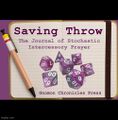Games (nonfiction): Difference between revisions
No edit summary |
No edit summary |
||
| Line 33: | Line 33: | ||
File:Sardaukar Leader.jpg|link=Sardaukar Leader|'''''[[Sardaukar Leader]]''''' is a 1977 tactical level board war game which simulates infantry combat on Arrakis during the betrayal of the Atreides by the Padishah Emperor Shaddam Corrino IV. | File:Sardaukar Leader.jpg|link=Sardaukar Leader|'''''[[Sardaukar Leader]]''''' is a 1977 tactical level board war game which simulates infantry combat on Arrakis during the betrayal of the Atreides by the Padishah Emperor Shaddam Corrino IV. | ||
File:Oregon Snake Bite.jpg|link=Oregon Snake Bite|'''''[[Oregon Snake Bite]]''''' is a historical drama video game. | |||
File:Chromo-Pee Olympics results.jpg|link=Chromo-Pee Olympics|The '''[[Chromo-Pee Olympics]]''' is an international sporting event in which participants attempt to urinate in five contrasting colors. | File:Chromo-Pee Olympics results.jpg|link=Chromo-Pee Olympics|The '''[[Chromo-Pee Olympics]]''' is an international sporting event in which participants attempt to urinate in five contrasting colors. | ||
Revision as of 19:49, 14 January 2023
Games
Introduction
A game is a structured form of play, usually undertaken for entertainment or fun, and sometimes used as an educational tool. Many games are also considered to be work (such as professional players of spectator sports or games) or art (such as jigsaw puzzles or games involving an artistic layout such as Mahjong, solitaire, or some video games).
Games are sometimes played purely for enjoyment, sometimes for achievement or reward as well. They can be played alone, in teams, or online; by amateurs or by professionals. The players may have an audience of non-players, such as when people are entertained by watching a chess championship. On the other hand, players in a game may constitute their own audience as they take their turn to play. Often, part of the entertainment for children playing a game is deciding who is part of their audience and who is a player. A toy and a game are not the same. Toys generally allow for unrestricted play whereas games come with present rules.
Key components of games are goals, rules, challenge, and interaction[disambiguation needed]. Games generally involve mental or physical stimulation, and often both. Many games help develop practical skills, serve as a form of exercise, or otherwise perform an educational, simulational, or psychological role.
Attested as early as 2600 BC, games are a universal part of human experience and present in all cultures. The Royal Game of Ur, Senet, and Mancala are some of the oldest known games.
In the News
"Denote an Olympian" is an anagram of "Napoleon Dynamite".
Jason and the Seventh Seal is a historical mythological adventure film written and directed by Ingmar Bergman and Don Chaffey about the adventures of the Jason, the world's mightiest swordsman and chess-player.
Dungeons & Collins is a fantasy tabletop role-playing game set to the music of Phil Collins.
Connect Forrest Gump is a 1994 American gaming-drama film about Forrest Gump (Tom Hanks), a slow-witted and kindhearted man from Alabama who witnesses and unwittingly influences several defining historical events in the 20th century United States while playing Connect Four.
TwixtY is a two-player strategy board game where players alternate turns placing pegs and links on Swinging Sixties icon Twiggy in an attempt to link their opposite sides.
A Game of Hustlers is a 1959 novel by Walter Tevis and George R.R. Martin about Daenerys Targaryen, a young pool hustler who challenges Baratheon Fats for the Westeros Championship Tournament.
Dungeonville is a 1998 American teen fantasy horror film about two siblings who become trapped in a 1950s TV show, set in a small Midwest town, where residents must obey a mysterious, all-powerful Dungeonmaster (Don Knotts).
Grand Theft Anathem is a series of action-adventure reality television programs created by [REDACTED] and marketed by Polycosm Games. Most of the gameplay revolves around number theory and computation, with occasional driving and shooting elements.
Game pack set in Personal Copters Prison Experiment game pack includes four-seat mini-copter boss battle — available for Grand Theft Anathem and Sardaukar Leader.
Sardaukar Leader is a 1977 tactical level board war game which simulates infantry combat on Arrakis during the betrayal of the Atreides by the Padishah Emperor Shaddam Corrino IV.
Oregon Snake Bite is a historical drama video game.
The Chromo-Pee Olympics is an international sporting event in which participants attempt to urinate in five contrasting colors.
Amanita Nights: The Ballad of Ricky Hyphae is a 2006 comedy sports mycology abuse film starring Will Farrell and John Allegro.
"Someone Sank My Battleship" is a song by Elton John.
"Do You Believe in Warships" is a song by American rock band The Lovin' Bombshell.
Indiana Jones and the Twister of Doom is a 1984 American action-adventure film about cultural anthropologist Indiana Jones (Harrison Ford), who is asked by the Milton Bradley Company to investigate a mysterious religious cult known as "The Game That Ties You up in Knots".
"I Still Haven't Found What I Shook 'Em For" is a song about games and gambling by Irish rock band U2.1.
Saving Throw: The Journal of Stochastic Intercessory Prayer is a journal of professional saving throw studies.
Freedom of Art, also known as The Thanksgaming Picture or I'll DM for Christmas, is the third of the Four Freedoms series of four oil paintings by American game designer and artist Norman Rockwell.
Fiction cross-reference
Nonfiction cross-reference
External links
- A Game of Hustlers
- [ Post] @ Twitter (14 January 2023)
- Games @ Wikipedia







![Grand Theft Anathem is a series of action-adventure reality television programs created by [REDACTED] and marketed by Polycosm Games. Most of the gameplay revolves around number theory and computation, with occasional driving and shooting elements.](/w/images/thumb/e/e7/Grand_Theft_Anathem.jpg/112px-Grand_Theft_Anathem.jpg)










